Last Updated on December 7, 2020
Wheel bearings are used in both the front wheels and the back wheels. Each individual wheel has their own wheel bearing and it is possible for just one of those bearings to wear out while the others are still in good condition.
That is why you won’t necessarily have to replace all of your wheel bearings if only one is worn out. Many (dishonest) mechanics will tell you that all need to be replaced or both on the same axle. This is usually not necessary.
There are certain symptoms you can look for which indicate bad wheel bearings or a mechanic will be able to tell you if you have any wheel bearings that need to be replaced when taking your car in for regular maintenance.
Top 5 Bad Wheel Bearing Symptoms
To determine the condition of your wheel bearings, there are 5 common signs you can look out for.
#1 – Uneven Tire Wear

When wheel bearings wear out, they tend to wear out unevenly from the rest of them. This will cause the corresponding tire to have abnormal tire wear compared to the others.
In a normal situation where your tires wear out, they would all be evenly worn out from simply driving on them. So if they are unevenly worn out, it could very well be to a bad wheel bearing.
Of course, other issues such as a bad wheel alignment, unbalanced tires, and others could also be causes of uneven tire wear so don’t assume it’s the wheel bearings unless other symptoms match up.
#2 – Grinding Noise

A common symptom of bad wheel bearings is when your tires have a loud grinding noise coming from them. This is caused when the wheel bearings lose their lubricity and build up a lot of heat inside of them instead.
It will almost be like hearing two pieces of metal grinding together. Usually, you’ll only hear the sound coming from one wheel rather than all of them because of how the wheels wear out unevenly. The noise is most noticeable while shifting or turning.
#3 – Steering Wheel Vibrates
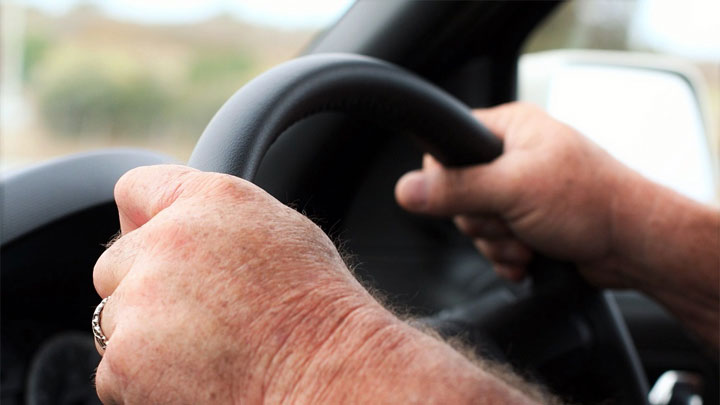
If the problem gets really bad then your steering wheel will start to vibrate. You’ll notice this vibration when you drive at slower speeds but the problem will get worse as you step on the gas pedal and accelerate the vehicle.
A lot of people think this symptom has to do with unbalanced tires on their vehicle. While the symptoms of both are similar, vibrations from an unevenly balanced tires occur at high speeds.
But in any case, you should take your vehicle to a mechanic and have them officially diagnose the problem.
#4 – Vehicle Pulls to One Side
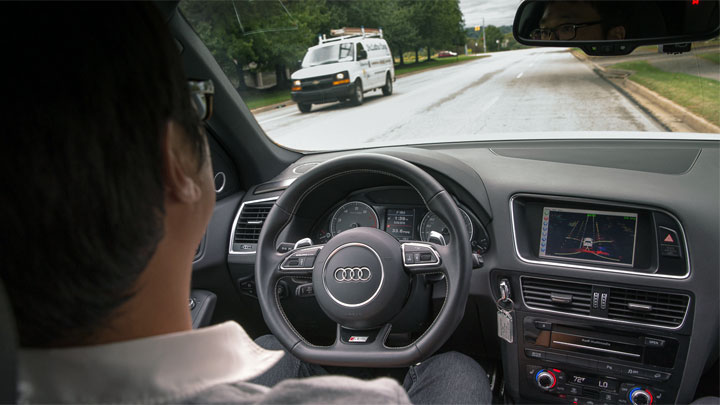
When a wheel bearing is worn and becomes corroded or pitted, the smooth lining which bearings require is no longer there and the rough surface causes vibration to that tire. This vibration may cause your vehicle to slightly pull to the side of the worn bearing.
You may also experience your car pulling to the side when applying your brakes. While this is a typical symptom of bad brake rotors or calipers, the actual cause may be the wheel bearings themselves because of the excessive amount of runout which they cause.
#5 – Excess Wobble or Play in Wheels
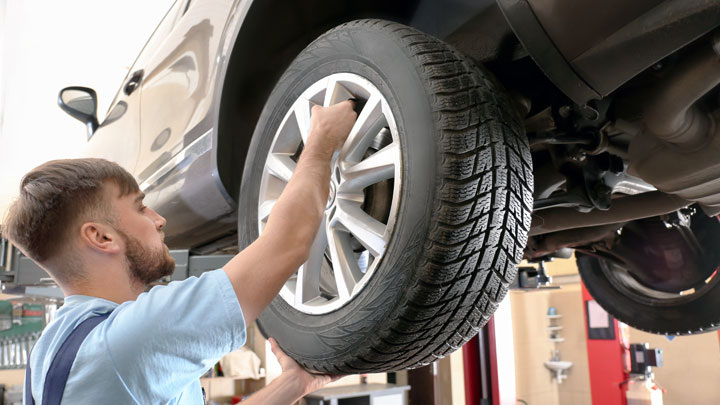
This one is a bit trickier to diagnose since you need to have your car on a hydraulic lift or both wheels of an axle up on jack stands. When lifted, grab one of the wheels and try rocking it back and forth and notice how much “play” or movement the wheel has. Now repeat this on the wheel at the other end of the axle.
If the wheel wobbles or moves back and forth when you rock it, you likely have bad wheel bearings. Good wheel bearings mean the wheel has almost no wobble or excess play.
See Also: Wheel Spacers (Pros and Cons)
Average Cost to Replace Front, Rear, and Hub Wheel Bearings
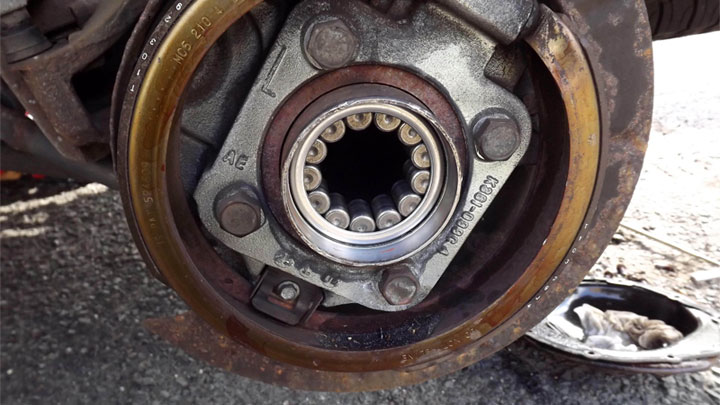
Front Wheel Bearings
Both Sides
Front wheel bearings are built into the steering knuckle arm assembly and connected to drive axle components of your vehicle. These bearings are made to last for many years without needing to be replaced. The cost to replace both front wheel bearings is going to be between $260 and $480.
The parts alone for the front wheel bearings are about $120 to $200. However, the labor costs will be a bit more extensive at around $140 to $280. The exact cost will depend on the prices of your local repair shop and the make and model of your vehicle. For large trucks, sports cars, and luxury cars, expect to pay more.
One Side
Now if you are just replacing the wheel bearing in one of your front wheels, these costs will pretty much be split in half. For the total cost, on average, expect to pay around $130 to $220. The parts will cost between $60 and $100, and the labor will cost between $70 and $140.
Rear Wheel Bearings
Both Sides
As for the rear wheel bearings, they will be a tad cheaper to replace but this will of course depend on the car make and model. The cost of a complete rear wheel bearing replacement will be somewhere in area of $240 to $460.
Parts will on average be between $100 and $180. The labor costs will be around $140 to $280.
One Side
If you are just going to replace one of the rear wheel bearings then it will be about $120 to $240 for the complete job. $50 to $90 for the parts and $70 to $140 for the labor.
Again, these are all only estimates but they are a good indicator of what you can expect to pay. The good news is that wheel bearings take a lot of time to wear out so you won’t have to replace them very often.
Rear Hub Bearings
Some vehicles use a rear hub bearing assembly where the wheel bearings are prepacked in the hub and installed as a complete unit. Instead of simply replacing the wheel bearings, the entire hub assembly must be replaced.
This of course makes the hub assembly more expensive than just the hub bearings. Expect to pay on average between $400 to $800 to replace hub assemblies on both sides of the axle. The cost of parts can vary quite a bit depending on how advanced the assembly is but the labor is usually slightly less than a typical rear bearing replacement.
Common Types of Wheel Bearings
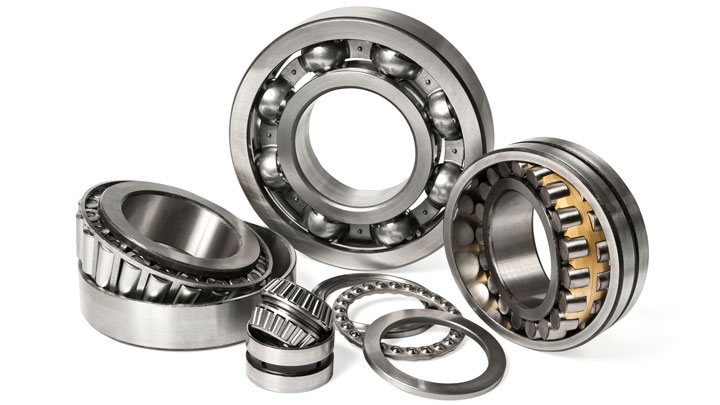
Friction is created when a wheel is turned. There is more resistance when the wheel has a heavy bearing. That is why “wheel bearing” refers to the component which is responsible for reducing the friction that exists between parts while the wheel is spinning.
When the wheel’s moving parts have less resistance between them, it reduces the wear and erosion that forms. As a result, the wheel’s lifespan is prolonged.
There are different types of wheel bearings that a manufacturer can use. Here are some common types along with their main purpose.
Ball Bearings
Out of all the wheel bearings out there, ball bearings are the most common and most versatile wheel bearings that can be used. They are able to absorb thrust loads and radial loads.
Cornering pressure is the thrust load and the weight amount placed on the wheel is the radial load. You will find ball bearings in wheels of all sizes, from roller skate wheels to automobile wheels.
Precision Ball Bearings
The design of precision ball bearings makes them suitable for high performance usage. Precision ball bearings have the ability to minimize friction which in turn reduces the amount of heat created.
The speed of their rotation is generally higher than regular bearings. For all these reasons, the landing wheels of an airplane and various racing cars have precision ball bearings in them. These bearings are designed specifically for extensive thrust and radial loads.
Roller Bearings
Roller bearings are a type of wheel bearings that are used commonly. The only thing is that roller bearings are not as versatile as ball bearings. Roller bearings are good at handling weight but they’re not the greatest for cornering.
If you’re using wheels which must corner at medium to high levels of speed, then roller bearings won’t be suitable for them. But if you’re using vehicles like grocery carts or hand trucks, then roller bearings will be fine for them.
Tapered Roller Bearings
The regular wheels of cars and trucks will usually have tapered roller bearings in them. They have a cone shape which cuts down the friction while cornering as the thrust load is high.
As you turn the car, there are various degrees to the angle of the wheels. With tapered roller bearings, they prevent grinding in the parts that are shifting.





need to replaced two front wheel bearing for captiva 2.4l
Is There Any Way Every 3 Months Or So Saying We Need New Wheel Bearings? Also They Know My Husband Not A Car Person n I Feel Their Ripping Us Off? We Bought It Used From Dealer Ship n With In A Couple Months Saying All These Different Things Need Too Be Fixed?
Back right wheel bearing has been replaced three times and tire four times since January 8th,2019.My brother in law has the one who replaced them all January 8th had tires new x 4 and alignment done at Tire Town in Mt.pleasnt, Texas .Also has a roaring sound when driving the car and steering wheel vibration all speeds.What could be the problem before I put more new tires on the car.
Unfortunately, a common cause of repeated wheel bearing failures is the install itself and since the same person has replaced it in your case, it’s likely the issue. Too many people think it’s ok to simply use an impact wrench to tighten up the spindle nut. A torque wrench must be used in this case.
If you are hearing a roaring noise that is definitely your wheel bearings. If you just replace them in January 2019 there is no way you should have to replace them again already. Unless you didn’t put them in right or didn’t put the right ones in
I agree 100 %, – NO WAY should you have to replace the wheel bearing-s for at Least 30 to 50,000 miles, unless improperly installed (or lmpact gun used to tighten) or abusive driving conditions.
I know this sounds weird but make sure tires are same sizes on back passenger and drivers sides 🙄 🤔 and the front also .
I just bought a 2003 Suburban, clean, well cared for and a good history from the seller. Noticed the tires were 10/32 out of 11.But a mild road vibration.
Took it to be spin balanced. Still vibrated but slightly better. Mechanic said third member was leaking and he thought bearings were out. 616.00 later the vibration is not only still there but slightly worse.????
Questions:
1. Do the wheel bearings depend on the 90 weight gear-lube for their day to day lubrication.
2. Can you press the bearings and get bad results (crooked)?
3. How do you know if the axle is(was), bent at the time of the repair, and why wouldn’t he just replace them then?
Especially since they come with the bearings already on them?
I drive 2010 Chevy Equinox LT ~ 71,000 miles. Please let me know what needs to be fixed fir front wheel bearing and should I have both front wheel bearings fix at once? Also what are reliable sources and price to fix this? Thanks
You usually only need to replace the bad wheel bearing, not all of them. I would call a few shops in your area to get a good idea of what you should expect to pay.
I have a 2003 Ford focus it has 94,000 miles on it. I just purchased it then drove it for about a month, when I turn it makes a clunking noise. I’m Gary take it to a mechanic Tuesday in Indiana, I was informed that it might be a wheel bearing. It only happens when I turn right.
Could be a wheel bearing or axle. I don’t know, I would defer to the mechanic who looked at the vehicle.
If it’s coming from the front and also if it is a front wheel drive It could possibly be the CV joint(s) might need replacing as mine made a clonking noise when the steering is in full lock, could be quite expensive to replace by a garage!
I replaced my front wheel bearing on my nissian 2010 rouge.I have tighten the hub bolts 3 times but still feel a whobble on acceleration. I know the bolts are hard to get at but can you help.
Not sure what the problem is. I think you’re going to have to bring it to a mechanic who can check your work in person and see if you made a mistake somewhere, or if there is an unrelated issue.
Thanks so much for that article! I thought I was a bike mechanic once and tried to true a wheel. What I didn’t understand, and your tutorial demonstrated, was that “opposite of the bend” means the spoke immediately opposite of the bend, not 180 degrees away opposite! Made a nice taco out of that rim. Duh. Thanks again..
I did the driver side and had to use a press to get the bearing out it rusted in so bad..Decided to do the other also rusted in bad…DO BOTH had to take whole assembly off by removing steering arm,strut bolts an tie rod bolt so it could be put on a press to get bearing hub out…A 2006 AWD was mine….brutal…do both when you do them.Bearing 160 bucks each an 25 to press it out.I did the work.
I have a 2013 Ford fusion making a winding noise in the rear tires, I think it’s the back wheel bearings.
Is there anything special I should know about the replacement of the bearings or is it cut and dry?
That depends on your mechanical experience and where you live. If you live in an area where rust is common, even simple jobs can turn into a huge headache if you’re not used to dealing with it.
I would look up a few videos to see what is entailed before you dive in yourself.